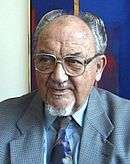Danish general election, 1987
Danish general election, 1987

|
|
|
|
|
|
|
General elections were held in Denmark on 8 September 1987.[1] Although the Social Democratic Party remained the largest in the Folketing with 54 of the 179 seats, the Conservative People's Party-led coalition government was able to continue. Voter turnout was 86.7% in Denmark proper, 68.9% in the Faroe Islands and 44.9% in Greenland.[2]
Results
| Denmark |
|---|
| Party |
Votes |
% |
Seats |
+/– |
| Social Democratic Party | 985,906 | 29.3 | 54 | –2 |
| Conservative People's Party | 700,886 | 20.8 | 38 | –4 |
| Socialist People's Party | 490,176 | 14.6 | 27 | +6 |
| Venstre | 354,291 | 10.5 | 19 | –3 |
| Danish Social Liberal Party | 209,086 | 6.2 | 11 | +1 |
| Centre Democrats | 161,070 | 4.8 | 9 | +1 |
| Progress Party | 160,461 | 4.8 | 9 | +3 |
| Christian People's Party | 79,664 | 2.4 | 4 | –1 |
| Common Course | 72,631 | 2.2 | 4 | New |
| Left Socialists | 46,141 | 1.4 | 0 | –5 |
| De Grønne | 45,076 | 1.3 | 0 | New |
| Communist Party of Denmark | 28,974 | 0.9 | 0 | 0 |
| Justice Party of Denmark | 16,359 | 0.5 | 0 | 0 |
| Humanist Party | 5,675 | 0.2 | 0 | New |
| Socialist Workers Party | 1,808 | 0.0 | 0 | 0 |
| Communist Party of Denmark/Marxist–Leninists | 987 | 0.0 | 0 | 0 |
| Independents | 3,366 | 0.1 | 0 | 0 |
| Invalid/blank votes | 26,644 | – | – | – |
| Total | 3,389,201 | 100 | 175 | 0 |
| Faroe Islands |
| People's Party | 6,411 | 28.8 | 1 | 0 |
| Social Democratic Party | 5,486 | 24.7 | 1 | +1 |
| Union Party | 5,345 | 24.0 | 0 | –1 |
| Republican Party | 3,478 | 15.6 | 0 | 0 |
| Self-Government Party | 1,070 | 4.8 | 0 | 0 |
| Progress Party | 438 | 2.0 | 0 | New |
| Invalid/blank votes | 157 | – | – | – |
| Total | 22,385 | 100 | 2 | 0 |
| Greenland |
| Siumut | 6,944 | 43.3 | 1 | 0 |
| Solidarity | 6,627 | 41.3 | 1 | 0 |
| Inuit Ataqatigiit | 2,001 | 12.5 | 0 | 0 |
| Polar Party | 474 | 3.0 | 0 | New |
| Invalid/blank votes | 934 | – | – | – |
| Total | 16,980 | 100 | 2 | 0 |
| Source: Nohlen & Stöver |
| Popular vote |
|---|
|
|
|
|
|
| A |
|
29.32% |
| C |
|
20.84% |
| F |
|
14.58% |
| V |
|
10.54% |
| B |
|
6.22% |
| D |
|
4.79% |
| Z |
|
4.77% |
| Q |
|
2.37% |
| P |
|
2.16% |
| Y |
|
1.37% |
| G |
|
1.34% |
| K |
|
0.86% |
| E |
|
0.49% |
| Others |
|
0.35% |
References
- ↑ Nohlen, D & Stöver, P (2010) Elections in Europe: A data handbook, p. 525 ISBN 978-3-8329-5609-7
- ↑ Nohlen & Stöver, p547

